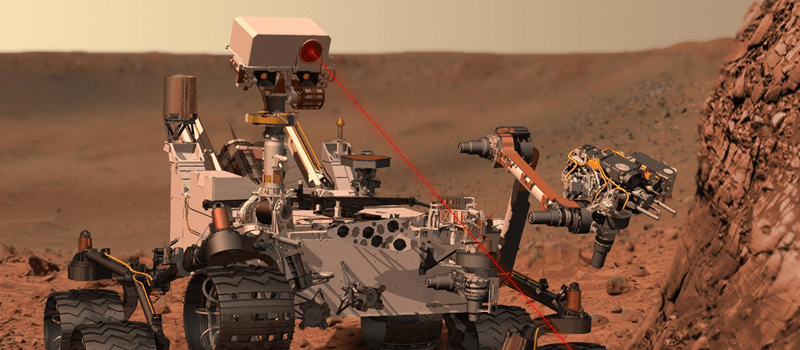The laser industry has revolutionized many domains of modern life in the past half century.
At first, it opened new ways to perform basic research by enabling a variety of scientific techniques that improved our understanding of the universe – from probing the atomic structure of molecules to measuring the distance to the moon.
Later, it had changed the telecommunication industry by allowing vast transmission of data at the speed of light, promoting the internet revolution. In between, it also modified and significantly improved numerous manufacturing processes (e.g., welding, cutting, engraving, 3D printing), and now the production of almost every product that contains electronic parts is laser assisted.
Lasers also allow mapping the environment, whether measuring small-scale objects, inspection of microelectronics parts, or assisting autonomous driving systems to identify their surroundings.
Another field that benefited from the development of lasers is medicine, and lasers have been incorporated in different medical fields.
In this post we will give some examples for the use of lasers in medical procedures and how laser-enabled technologies are utilized in the medical field.
Ophthalmology and laser eye surgery

As a first example we will consider ophthalmology, and specifically laser eye surgery (see Fig. 1). Though there are several medical procedures that involve lasers to treat eye conditions, the most common one is Laser-Assisted in SItu Keratomileusis or LASIK, in short.
In this eye surgery, that was performed tens of millions of times to date, the shape of the cornea is changed so that light guided to the eye will focus on the retina, eliminating the use for glasses for near- or far- sighted patients.
The cornea’s topography must be characterized prior to the surgery to reshape it correctly.
During the surgery, a first ultrafast laser with femtosecond pulse duration in the infrared region is used to cut a small piece of the cornea that is stored for later use, known as a flap.
This femtosecond laser creates a clean cut due to its high peak power and small beam size. Later, an excimer laser is used for the ablation process, in which the exposed part of the cornea is ablated in a controlled manner to change its light-focusing properties. This laser has a shorter wavelength (e.g., 193 nm), invisible to the human eye, which is absorbed in the cornea, and does not propagate into the eye as visible light does.
The light absorbed in the cornea heats it and vaporizes the tissue. Since the interaction of the light with the cornea is well characterized and the laser power is highly stable, proper timing of the laser operation duration and adequate beam guiding allow achieving the required amount of ablation needed to correct the eye vision.
Finally, the flap removed by the first laser is placed back in its place and the healing process begins. With the aid of lasers, this highly sophisticated operation evolved into a very safe and almost painless procedure that takes only several minutes to complete, and significantly improves the patients’ eyesight in a matter of hours.
Aesthetic treatments
Another field that harnesses lasers in an ever-growing pace is aesthetic treatments.
The study of interaction of laser light with the skin enabled the invention of new medical procedures, each targeted for a specific need.
Lasers are used to remove unwanted tattoos and body hair, and treat different skin-related conditions (e.g., reduce wrinkles, remove hyperpigmentation, tighten skin). Roughly speaking, the above-mentioned techniques can be divided into two distinct groups – ablative, where an intense laser light vaporizes the body tissue, and non-ablative, where the light penetrates deeper into the skin without damaging the outer layers. For example, non-ablative lasers are used to remove tattoos or unwanted hair by emitting light that passes through the skin’s surface to the tattoo layer or hair follicle.
Specifically, tattoo ink particles are too large for the human body to deal with, and that is why they can last for many years inside the skin. However, light guided through the skin can be absorbed in the tattoo ink particles and breaks them down to smaller particles, that can be removed as waste by the body. Ablative lasers, in contrast, are high intensity pulsed lasers that vaporize layers of the skin to reduce wrinkles or remove stains and acne scars. Among the typically-used ablative lasers is the Er:Yag laser, emitting light at a wavelength of 2940 nm. This wavelength is used since it is absorbed efficiently in water molecules which consists more than 60% of the human skin. Procedures done with ablative lasers are basically a form of controlled skin injury that allows skin rejuvenation after healing takes place.

Until now we have given some examples of how lasers are used directly in medical applications. There are many more procedures that utilize lasers in ways like the ones discussed above – for example, lasers are now also used for cancer removal, kidney-stone destruction or even tooth decay treatment.
Damage unwanted tissues, mapping human organs and more…
The applications are different, and so are the laser parameters tailored for each purpose, but the mechanism is the same – focusing a small beam onto the tissue we wish to damage. However, besides using lasers directly to treat medical conditions, lasers are also used as supporting tools to various medical procedures.
A good place to start from is distance measurement using lasers, that allows mapping human organs. As an example, laser scanners can construct a 3D map of the oral cavity or a dental model and assist dentists to treat various teeth conditions (see Fig, 3).
Another emerging field is medical 3D laser printing. In this technology, also known as additive manufacturing, a computer file (sometimes generated using a laser scanner) is used to print parts that are later used to replace human organs, such as a missing tooth or a bone part, orthopedic or cranial implants and more.
Lasers also take part in different imaging applications. One group of such methods is known as optical tomography, in which a two- or three-dimensional map of cells or tissue is formed from scattered or transmitted light. Microscopy is one more medical field that benefitted from the development of lasers.
Since the invention of lasers, scientists have found ways to apply their properties to surpass the diffraction limit governed by classical optics, and formed a new field, known as super-resolution microscopy. For example, a confocal laser scanning microscopy contains a small hole through which the light traverses, so that the reflected light returns to the detector only from the focal plane of the system. This technique allows mapping a cross section of the sample under investigation and is widely used for medical diagnosis applications.
To conclude, lasers are rapidly entering a growing number of medical fields. New technological improvements (higher intensities or powers, shorter pulse durations, different wavelengths) eventually find their way into improved medical procedures which are safer, more controllable, produce better results, and therefore improve the life quality of countless patients worldwide.










Leave a Reply
Your email address will not be published. Required fields are marked *